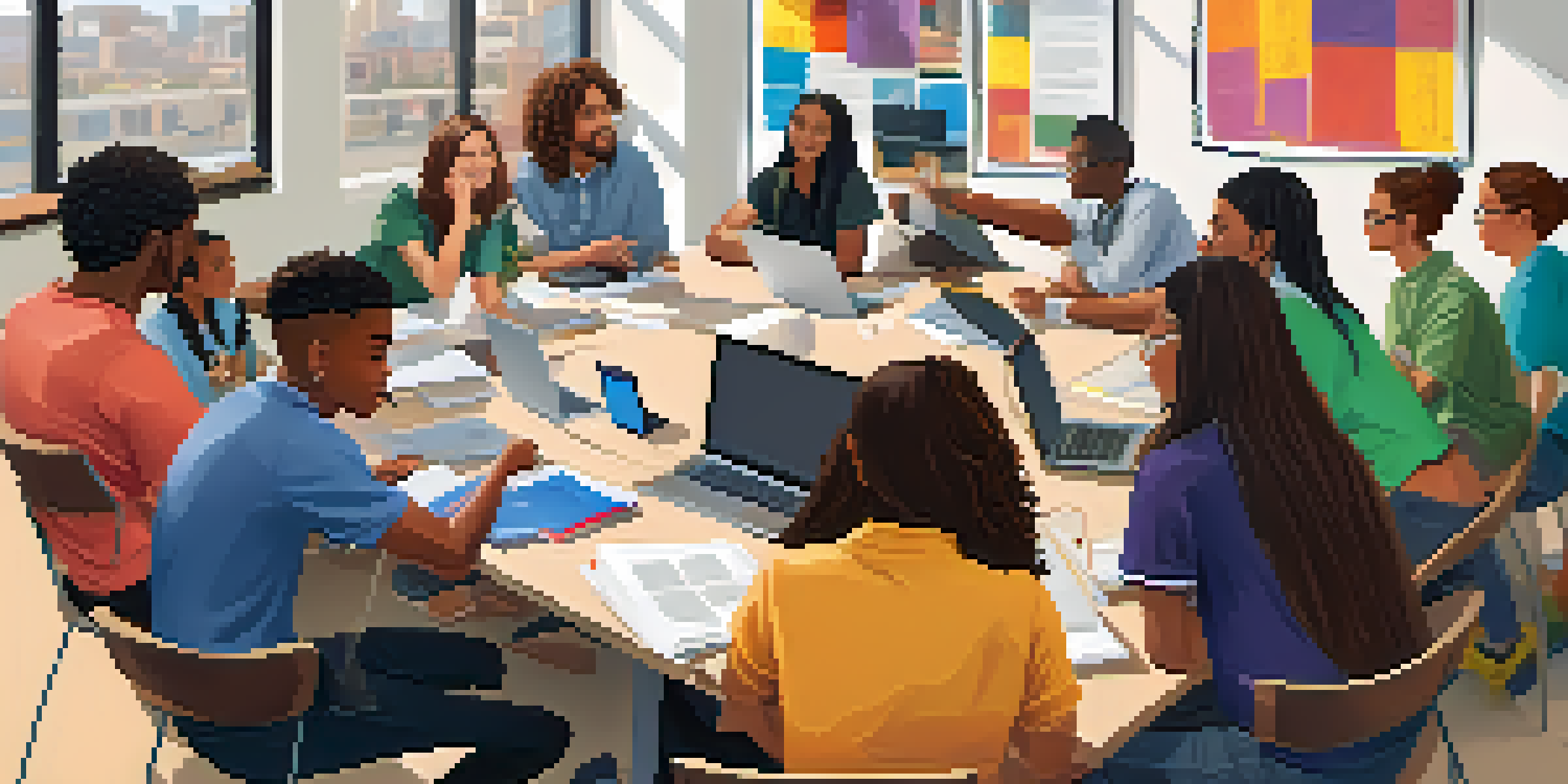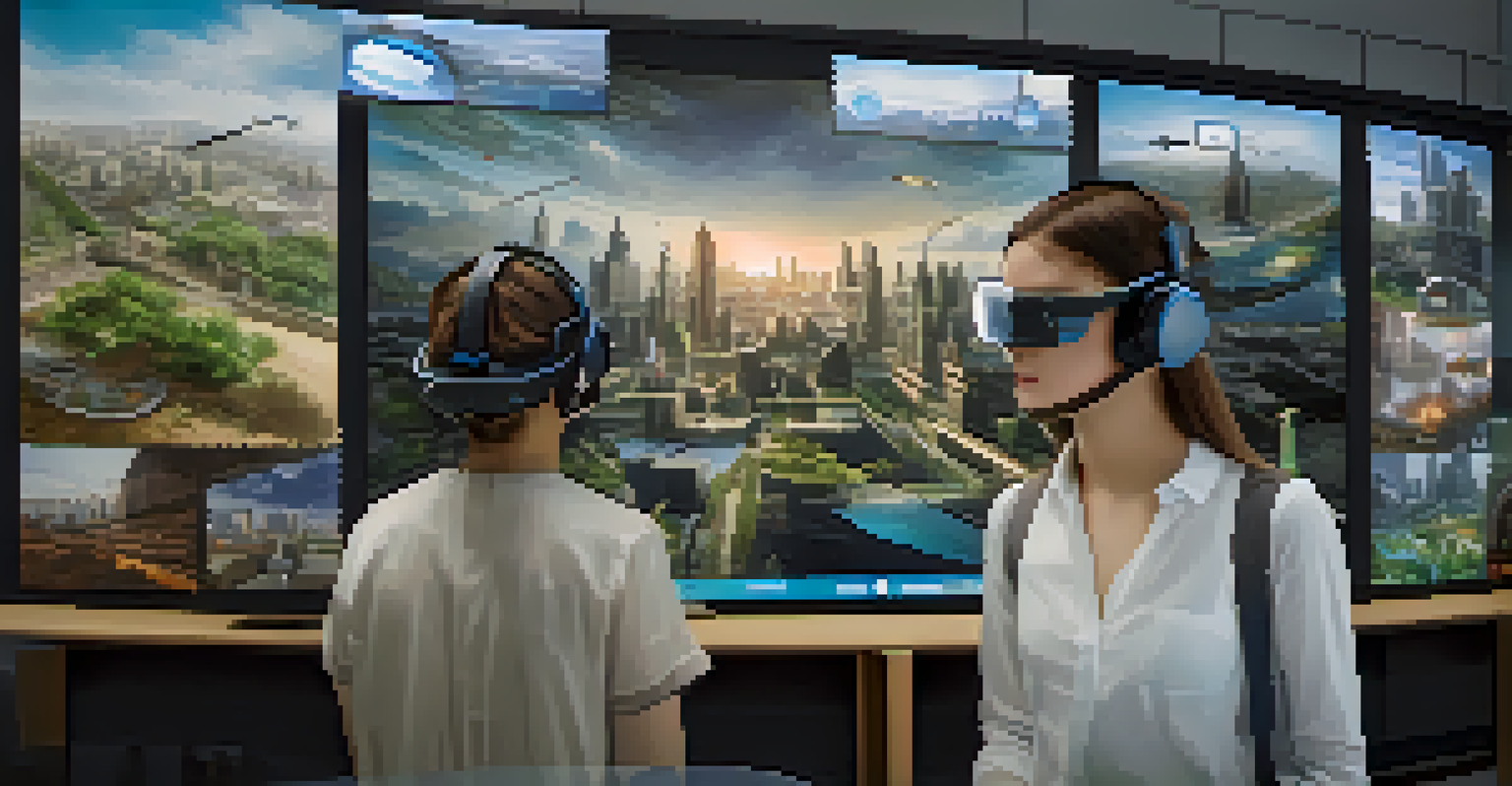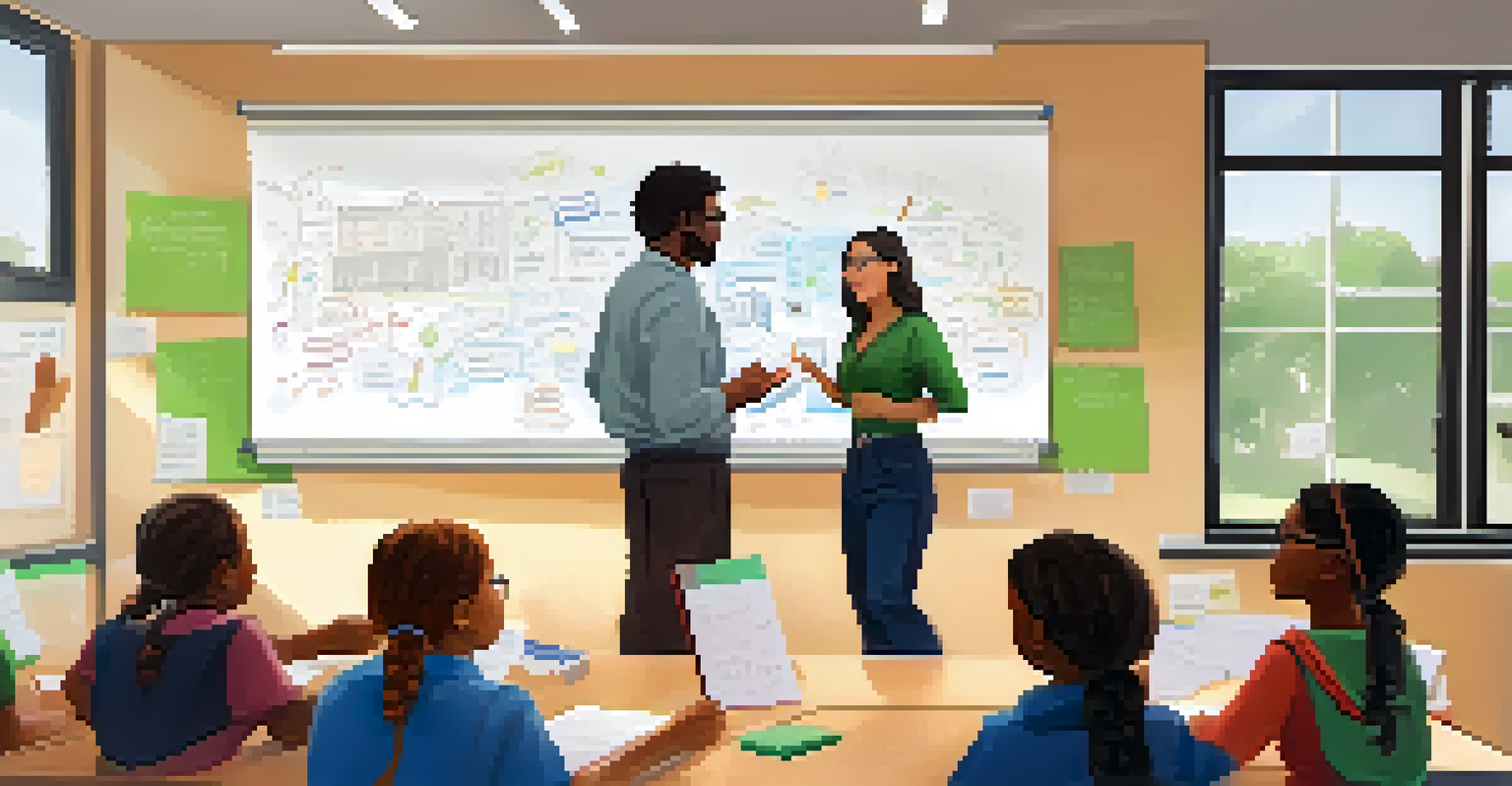Creating Collaborative Learning Experiences Through Simulations

Understanding Collaborative Learning and Its Benefits
Collaborative learning is an educational approach that emphasizes teamwork and communication among students. When learners come together, they not only share knowledge but also develop essential skills like problem-solving and critical thinking. This interactive process creates a richer learning environment, as diverse perspectives enhance understanding and retention of information.
The greatest danger in times of turbulence is not the turbulence; it is to act with yesterday's logic.
The benefits of collaborative learning extend beyond academic performance. Students gain interpersonal skills that are vital in both personal and professional settings. For instance, working in groups teaches them how to navigate conflicts, appreciate differences, and build consensus, all of which are key in today’s globalized world.
Moreover, collaborative learning fosters a sense of community among students. When learners engage with one another, they create supportive networks that enhance motivation and reduce feelings of isolation. This sense of belonging can lead to higher levels of participation and engagement in the learning process.
What Are Simulations and How Do They Work?
Simulations are experiential learning tools that replicate real-world scenarios, allowing learners to practice skills in a controlled environment. They can range from simple role-playing exercises to complex virtual environments that mimic actual job situations. This hands-on approach encourages students to apply theoretical knowledge in practical contexts, making learning more effective.

The essence of simulations lies in their ability to offer immediate feedback. As participants navigate through scenarios, they can see the consequences of their actions in real-time. This feedback loop is crucial for reinforcing concepts and improving decision-making skills, helping learners understand the impact of their choices.
Collaborative Learning Enhances Skills
Collaborative learning promotes teamwork and critical thinking, enriching the educational experience through diverse perspectives.
Furthermore, simulations often require participants to collaborate, breaking down traditional barriers of learning. For example, in a business simulation, students might need to work together to strategize, negotiate, and make decisions, fostering teamwork and communication skills that are essential in any field.
Types of Simulations in Collaborative Learning
There are various types of simulations that can be used to enhance collaborative learning experiences. Role-playing simulations allow students to embody different characters or roles, promoting empathy and understanding of diverse perspectives. This method can be particularly effective in fields like psychology, education, and social work.
Alone we can do so little; together we can do so much.
Another popular type is virtual simulations, which utilize technology to create immersive environments. These simulations can replicate complex systems, such as ecological models or healthcare scenarios, where students must collaborate to solve problems. The use of technology not only engages learners but also prepares them for modern workplaces that increasingly rely on digital tools.
Finally, case study simulations combine real-world challenges with collaborative learning. Students analyze and discuss actual cases, working together to propose solutions. This approach not only enhances critical thinking but also helps students learn to articulate their ideas clearly, an essential skill for any professional setting.
Designing Effective Simulations for Collaboration
Designing effective simulations requires a thoughtful approach to ensure they meet the learning objectives. Start by defining clear outcomes that align with the educational goals. This clarity helps in creating scenarios that are relevant and engaging for the participants, making their learning experience more meaningful.
Next, consider the complexity of the simulation. It should be challenging enough to encourage critical thinking and collaboration but not so complex that it overwhelms participants. Striking the right balance ensures that students remain engaged and motivated without feeling lost in the process.
Simulations Provide Real-World Practice
Simulations create controlled environments for learners to apply theoretical knowledge practically, enhancing skill retention and decision-making.
Finally, be sure to incorporate debriefing sessions after the simulation. These discussions are crucial for reflecting on the experience, sharing insights, and consolidating learning. By encouraging students to articulate what they learned, you reinforce their understanding and promote deeper engagement with the material.
Overcoming Challenges in Collaborative Simulations
While collaborative simulations offer numerous benefits, they are not without challenges. One common issue is the varying levels of participation among students. Some may dominate discussions, while others may hesitate to contribute, leading to imbalanced group dynamics. It’s important for facilitators to establish ground rules that promote equal participation and respect for all voices.
Another challenge is the potential for conflict within groups. Differing opinions and approaches can lead to disagreements, which, while natural, may disrupt the learning process. Encouraging conflict resolution strategies and fostering a culture of open dialogue can help students navigate these situations more effectively.
Lastly, technical issues can arise, especially with virtual simulations. Ensuring that all participants are familiar with the technology beforehand can minimize disruptions. Providing ongoing support during the simulation also helps maintain engagement and keeps the focus on collaborative learning.
Assessing Learning Outcomes in Simulations
Assessing learning outcomes in collaborative simulations can be a bit tricky, but it’s essential for measuring effectiveness. Start by defining clear criteria for success that align with the learning objectives. This could include evaluating teamwork, problem-solving capabilities, and the application of knowledge gained during the simulation.
Peer assessments can be a valuable tool in this process. By allowing students to evaluate each other's contributions, you not only foster accountability but also encourage reflection on their own performance. This method can provide insights into group dynamics and individual engagement levels.
Technology Fuels Future Simulations
The integration of virtual reality and AI in simulations will personalize learning experiences and foster collaboration across diverse locations.
Additionally, incorporating self-assessments helps students reflect on their learning journey. Encouraging them to identify their strengths and areas for improvement fosters a growth mindset and instills a sense of ownership over their educational experience.
Future Trends in Collaborative Learning Through Simulations
As technology continues to evolve, so too will the landscape of collaborative learning through simulations. The integration of virtual and augmented reality is set to revolutionize how simulations are conducted, creating even more immersive experiences that engage learners on a deeper level. Imagine students exploring historical events or conducting virtual surgeries — the possibilities are endless!
Moreover, artificial intelligence can enhance simulations by personalizing learning experiences. AI-driven systems can adapt scenarios based on individual learner performance, ensuring that each student faces challenges that suit their skill level. This personalization promotes engagement and allows for more meaningful collaboration.

Finally, the rise of remote learning has opened up new avenues for collaborative simulations. With tools that allow students from different locations to work together, the learning experience becomes more diverse and inclusive. This shift not only prepares students for the realities of a globalized workforce but also enriches their learning through varied perspectives.